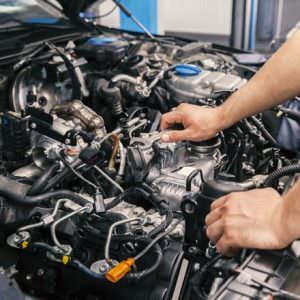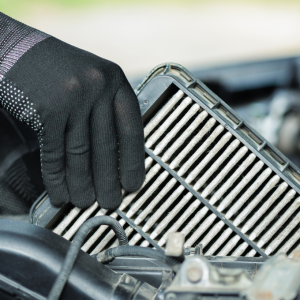Particle filter warning light on? Don't panic, here are our tips.
Driving a modern vehicle is an experience that offers many benefits, including comfort, efficiency and reduced pollutant emissions. One of the key elements contributing to an improved driving experience is the particulate filter, known as FAP or DPF.
However, in some cases, you may notice that the particulate filter warning light comes on in the dashboard of your vehicle. This event may cause concern, but it is important to know how to handle it correctly to avoid costly repairs. In this article, we will explore what causes the particulate filter warning light to come on, what to do when this happens, and how to solve the problem.
The Particulate Filter: An Ally Against Pollutant Emissions
Before we delve into the details of what to do when the particulate filter light comes on, let's take a look at what exactly this component is and why it is so important. The particulate filter, also known as the soot filter or DPF (Diesel Particulate Filter), is a crucial device in modern vehicles, particularly those with diesel engines.
Its main task is to capture and remove soot particles and other harmful impurities in diesel engine exhaust gases. This process contributes significantly to reducing harmful emissions into the environment, improving air quality and meeting increasingly stringent anti-pollution regulations.
Causes of the Particle Filter Warning Light coming on
When the particle filter warning light comes on, it indicates that there is a problem in the system and that the filter may be partially clogged or that the regeneration process has not been successfully completed. Regeneration is the process in which the particle filter burns off particles accumulated during driving, leaving the filter clean and ready to continue operating efficiently.
The main causes of the particle filter light coming on include:
- Low Speed and Short Distance Driving: If the vehicle is mainly used for short journeys or driving at low speeds, it may not reach the ideal conditions for filter regeneration. Regeneration requires high temperatures and constant driving at a sufficient speed to complete the process.
- Oil in the Particle Filter: Engine oil that ends up in the particle filter can hinder the regeneration process. This can occur due to faulty seals or engine problems.
- Defective Sensors: Defective or faulty sensors can affect the vehicle's ability to correctly assess the level of particle accumulation in the filter and to initiate regeneration when necessary.
- Electronic Errors: Problems in the vehicle's electronic control unit can lead to incorrect signals or prevent filter regeneration.
- Use of Low Quality Fuel: Frequent use of low-quality fuel can contribute to the accumulation of harmful residues in the particle filter.
What to do when the Particle Filter Warning Light comes on
When the particle filter light comes on, it is important to act quickly to solve the problem and prevent greater damage. Here is what you can do when faced with this situation:
- Start an Extended Guide: One of the first actions is to start driving for a long time on motorways or extra-urban roads. During this drive, try to keep the vehicle at a constant engine speed, usually between 2500 and 3000 rpm. This type of driving helps to create optimal conditions for the regeneration of the particle filter.
- Beware of the City Key: Some vehicles are equipped with a 'City' button that reduces the effort required to turn the steering wheel. While this function is useful for urban driving, during filter regeneration it is advisable to deactivate 'City' in order to maintain the desired engine speed.
- Keep Driving: After prolonged driving, continue to monitor the particle filter light. If the regeneration process is successful, the light should switch itself off.
- Avoid Short and Low Speed Driving: Try to avoid using the vehicle for short journeys or driving at low speeds, as these conditions make it difficult for the filter to regenerate.
- Examine the Owner's Manual: Consult your vehicle owner's manual for further information and specific instructions on handling the particulate filter warning light.
When to Contact a Specialist Workshop
If the particle filter warning light stays on or if the engine light also comes on, it is advisable to contact a specialist workshop as soon as possible. This situation could indicate more serious problems in the emission system or in the filter itself.
A specialist workshop can accurately diagnose the problem using appropriate equipment and tools. Furthermore, if the particle filter requires maintenance or regeneration, they can handle this procedure appropriately. Servicing the particle filter involves dismantling it and sending it to specialised companies that open it, regenerate it and certify it, restoring its efficiency almost to 100%.
Turbomotori's Solution
If you are facing particle filter problems or need assistance with any other issues related to your vehicle, Turbomotori is here to help. With years of experience in the industry, we offer quality services for the maintenance and regeneration of particulate filters. Do not hesitate to contact our offices for further information and support.
In summary, the particulate filter warning light coming on is not a cause for alarm, but requires prompt action. By following the correct instructions and, if necessary, getting help from qualified professionals, you can effectively solve the problem and keep your vehicle in top operating condition. Regular maintenance and attention to detail are key to a safe and efficient driving experience.









